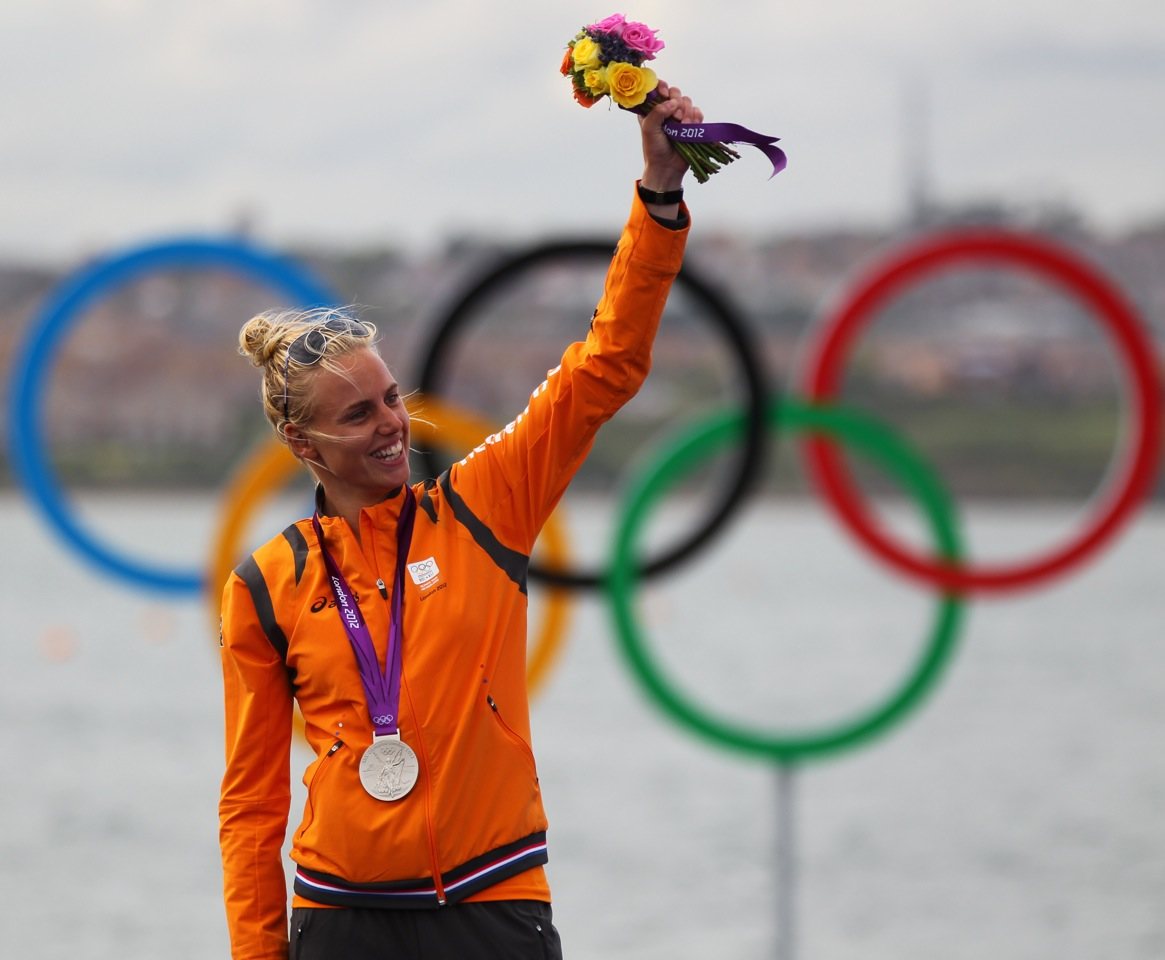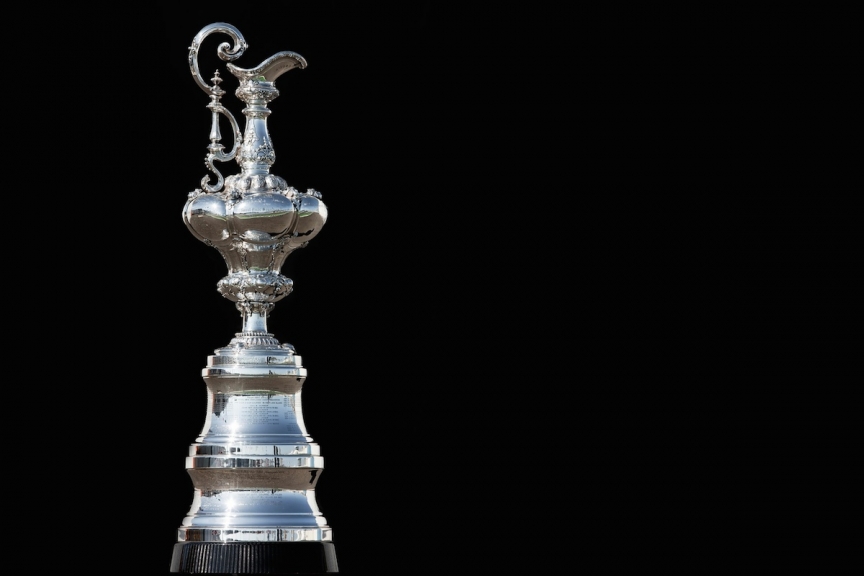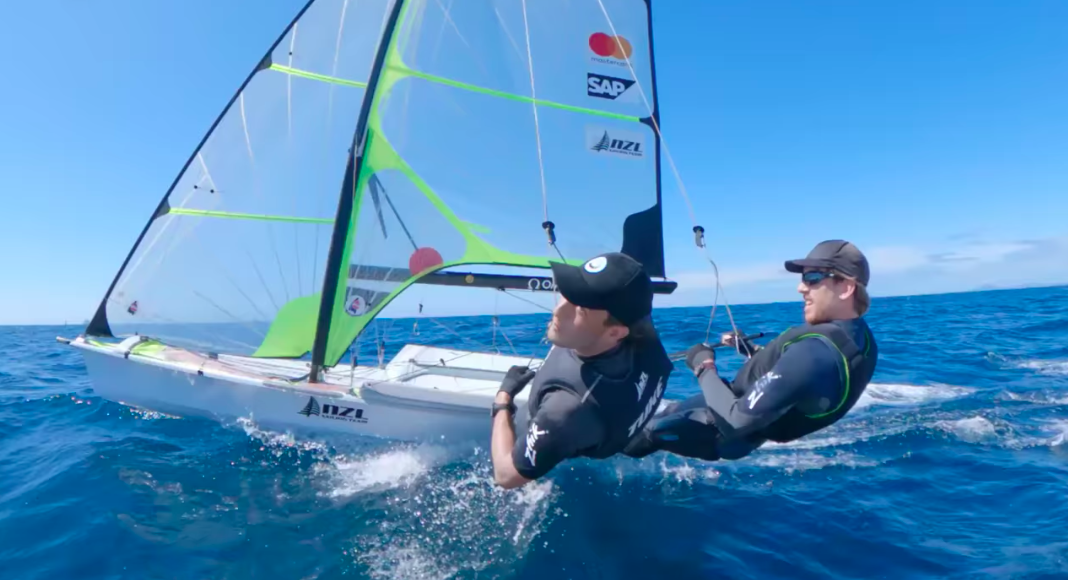If you paid attention to the Laser Radial medal race at the Olympics in August, you’ll know that four sailors went into the deciding race effectively on equal points. Whoever beat who in the race would determine which of the four would take gold, silver and bronze - and which of the four would end up with nothing. It looked set to be a humdinger of a finale, and it didn’t disappoint. With multiple place changes throughout the 30-minute race, this race had everything, exactly what the architects of the medal race must have had in mind. For China’s Xu Lijia (and her British coach, none other than Y&Y contributor Jon Emmett), it was tears of joy. For Ireland’s Annalise Murphy in 4th place, it was tears of anguish.
No such last-minute drama in the 49er medal race, though. Instead the Aussies - Nathan Outteridge and Iain Jensen - had wrapped up gold already, as indeed the Kiwis, Peter Burling and Blair Tuke, had already secured silver. Whilst there was plenty of interest on which of six teams would take bronze (it was the Danes, Peter Norregaard and Peter Lang), this medal race had nothing to match the drama of the Radials.
Fortunately 49er class organiser Ben Remocker and Britain’s own double Olympic medallist in the 49er, Simon Hiscocks, have been working on a concept these past two years which is finally being trialled in anger. In fact I wrote about the concept of ‘Theatre Style Racing’ in Roll Tacks back in 2010. Well a few weeks ago in mid September the Seiko 49er European Championships at Lake Garda became the first major event to be run along these radical new lines. The 65 teams started with a long-distance, 13km race up and down the lake as an opening heat, and then went into conventional qualifying heats to shake the fleet out into gold, silver and bronze. A series of races then whittled the top 25 down to the final 15, then the final eight, and ultimately down to four.
The event was still going on as I write, so I can’t tell you which four teams made it to the final race. But regardless of who had achieved what in the course of the regatta, the scoresheet was wiped clean for one deciding race lasting just eight minutes. As with the Radial medal race, three of the teams will have won a medal of some colour, and one - perhaps the dominant team of the week - will have won nothing, or ‘leather’ as Ben refers to it.
This level of uncertainty creates a drama that is irresistible to spectators - easy to see the appeal of this format from their perspective. But I asked Ben if the big stars in the 49er class were into the idea of staking a week’s work on one eight-minute winner-takes-all showdown. “Nathan [Outteridge] and Peter [Burling] are two of the most enthusiastic supporters of what we’re doing,” says Ben. He says they’re happy to pit their skills against three other teams in such a ‘do or die’ scenario. So if the guys with the most to lose - the gold and silver medal winners from Weymouth 2012 - are up for the challenge, who are the rest of us to complain?
Ben and Simon have been kicking these ideas around for some time so I asked him what it was like to have their thunder somewhat stolen by the new format of racing in the America’s Cup World Series. “Ideas are cheap, right? Well done to the America’s Cup for pushing their format through and making it work, I think it looks fantastic. But I think they’ve got two things wrong - spectators can’t maintain their attention span for 30 minutes, so we’ve gone for eight; and they’ve got invisible GPS boundaries to mark the edges of the course. Well we couldn’t afford the technology anyway, but I wouldn’t like the idea of the sailors looking at the on-board electronic distance countdown the whole time rather than doing some heads-up sailing, so we’ve got rope boundaries down either side of the course.”
Ben plans to populate the boundaries with floating billboards for sponsors and advertisers, and ultimately to have floating pontoons with tiered seating for spectators. “We want to have the racing in the windiest, best place for the sailors and the spectacle. So rather than bringing the racing towards the shore and potentially compromising the show, we want to bring the spectators to the best race courses.”
Ben doesn’t much rate the reaching starts in the AC45 racing, which surprises me. I think the starts have been well received by the America’s Cup sailors, among whom there are many top current or former 49er stars, including the aforementioned Outteridge, Britain’s Chris Draper and Paul Campbell-James, Italy’s Francesco Bruni, and so on. They seem to love the reaching start, which to my mind is much more spectacular and exciting than a conventional windward start.
One of the other many innovations brought in by Russell Coutts is having inside room at windward marks, just as we are all used to having at any other mark of the course. I hope Ben adopts this for his theatre-style racing, and indeed I’d like to see inside room at windward marks trialled more broadly across all forms of dinghy, cat and keelboat racing.
Roll Tacks - August 2012
Related Articles

Day 9 at the Olympic Regatta
Read More
 Australia are coming on strong, and threaten to topple the mighty Team GB from their perch as the pre-eminent sailing team in the world. Tom Slingsby wrapped up Australia’s first gold of the regatta, but his mates in the 49er Nathan Outteridge and Tom Slingsby sealed 49er gold with a Medal Race to spare, as did the Kiwis for silver.
Australia are coming on strong, and threaten to topple the mighty Team GB from their perch as the pre-eminent sailing team in the world. Tom Slingsby wrapped up Australia’s first gold of the regatta, but his mates in the 49er Nathan Outteridge and Tom Slingsby sealed 49er gold with a Medal Race to spare, as did the Kiwis for silver.

America's Cup - April 2012
 With a home crowd to please, Luna Rossa burst on to the America’s Cup World Series with a performance that delighted their passionate fans and struck fear into the hearts of their competitors. The wild reception in Naples was a reminder that no one can top the Italians in their enthusiasm for sport - even sailing!
With a home crowd to please, Luna Rossa burst on to the America’s Cup World Series with a performance that delighted their passionate fans and struck fear into the hearts of their competitors. The wild reception in Naples was a reminder that no one can top the Italians in their enthusiasm for sport - even sailing!
Read More
 With a home crowd to please, Luna Rossa burst on to the America’s Cup World Series with a performance that delighted their passionate fans and struck fear into the hearts of their competitors. The wild reception in Naples was a reminder that no one can top the Italians in their enthusiasm for sport - even sailing!
With a home crowd to please, Luna Rossa burst on to the America’s Cup World Series with a performance that delighted their passionate fans and struck fear into the hearts of their competitors. The wild reception in Naples was a reminder that no one can top the Italians in their enthusiasm for sport - even sailing! 
Race to the Poor Knights Islands
Read More

A great example of how to make your training fun and unpredictable...

America's Cup - January 2014
 Sir Ben Ainslie was the star attraction at the London Boat Show, where the four-time Olympic Champion sounded very positive about the prospects of mounting his own America’s Cup challenge. Ben, along with French star Franck Cammas, also told us his plans to race in the Extreme Sailing Series this season. With no Cup racing going on at the moment, the global cat racing circuit has given potential Cup challengers a playground to keep them occupied for the next year.
Sir Ben Ainslie was the star attraction at the London Boat Show, where the four-time Olympic Champion sounded very positive about the prospects of mounting his own America’s Cup challenge. Ben, along with French star Franck Cammas, also told us his plans to race in the Extreme Sailing Series this season. With no Cup racing going on at the moment, the global cat racing circuit has given potential Cup challengers a playground to keep them occupied for the next year.
Read More
 Sir Ben Ainslie was the star attraction at the London Boat Show, where the four-time Olympic Champion sounded very positive about the prospects of mounting his own America’s Cup challenge. Ben, along with French star Franck Cammas, also told us his plans to race in the Extreme Sailing Series this season. With no Cup racing going on at the moment, the global cat racing circuit has given potential Cup challengers a playground to keep them occupied for the next year.
Sir Ben Ainslie was the star attraction at the London Boat Show, where the four-time Olympic Champion sounded very positive about the prospects of mounting his own America’s Cup challenge. Ben, along with French star Franck Cammas, also told us his plans to race in the Extreme Sailing Series this season. With no Cup racing going on at the moment, the global cat racing circuit has given potential Cup challengers a playground to keep them occupied for the next year. 
America's Cup - October 2012
 Adversity in the America’s Cup can come from the strangest of places, as Energy Team is finding out to its cost. The French team is facing the strangest of legal battles off the water, but as to the battles on the water.... well Ben Ainslie was the biggest winner at the recent event - even if he didn’t actually win.
Adversity in the America’s Cup can come from the strangest of places, as Energy Team is finding out to its cost. The French team is facing the strangest of legal battles off the water, but as to the battles on the water.... well Ben Ainslie was the biggest winner at the recent event - even if he didn’t actually win.
Read More
 Adversity in the America’s Cup can come from the strangest of places, as Energy Team is finding out to its cost. The French team is facing the strangest of legal battles off the water, but as to the battles on the water.... well Ben Ainslie was the biggest winner at the recent event - even if he didn’t actually win.
Adversity in the America’s Cup can come from the strangest of places, as Energy Team is finding out to its cost. The French team is facing the strangest of legal battles off the water, but as to the battles on the water.... well Ben Ainslie was the biggest winner at the recent event - even if he didn’t actually win.